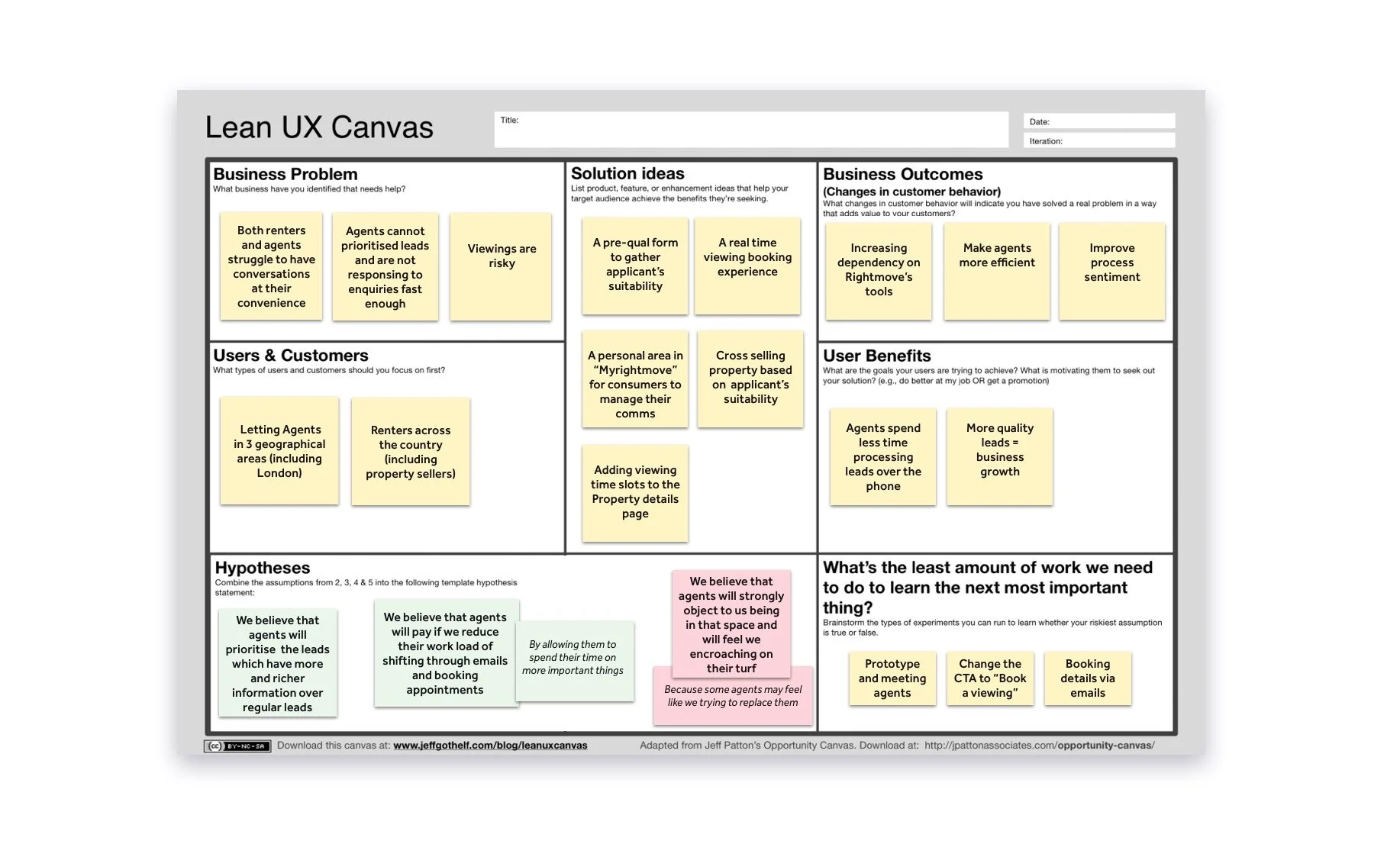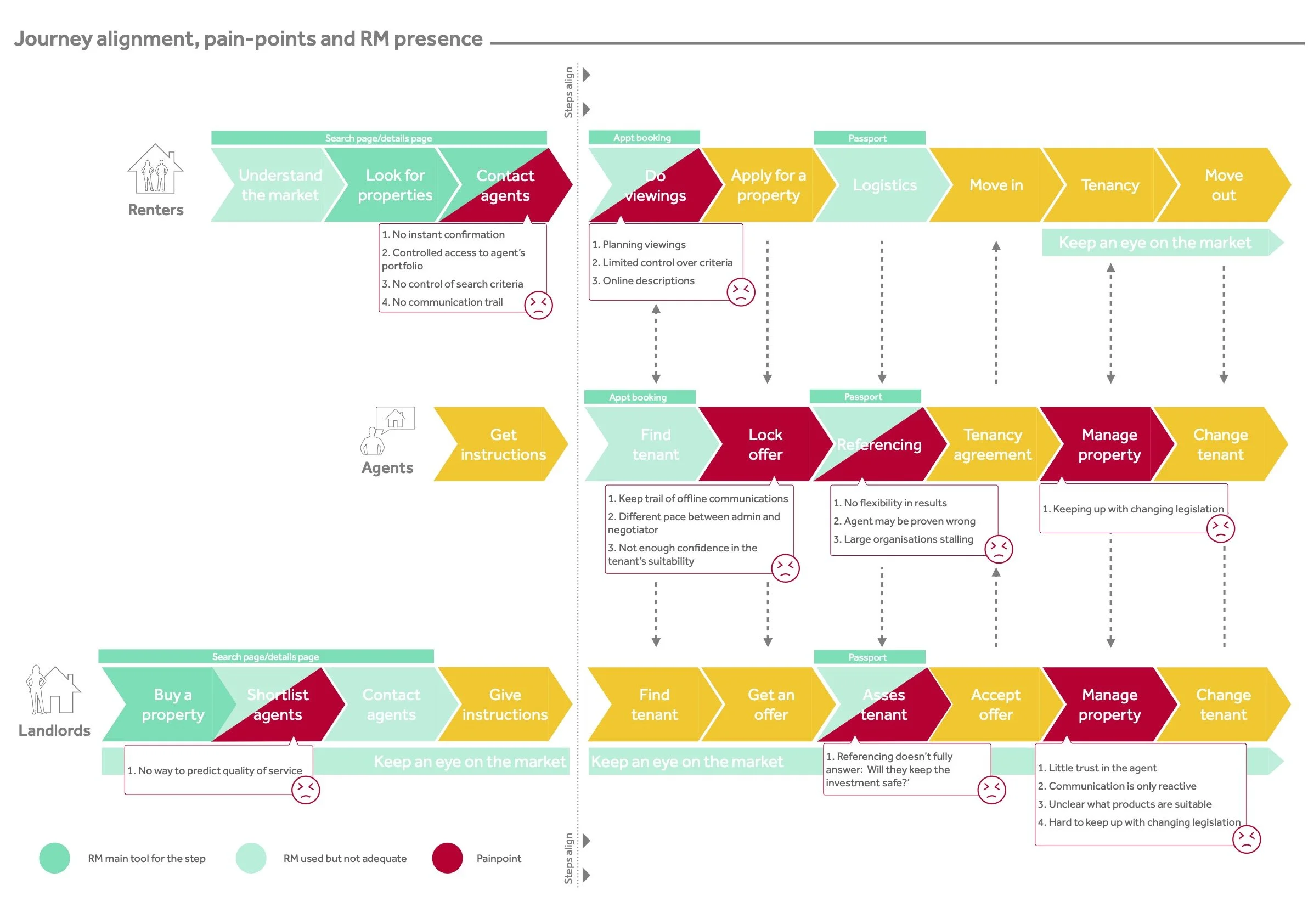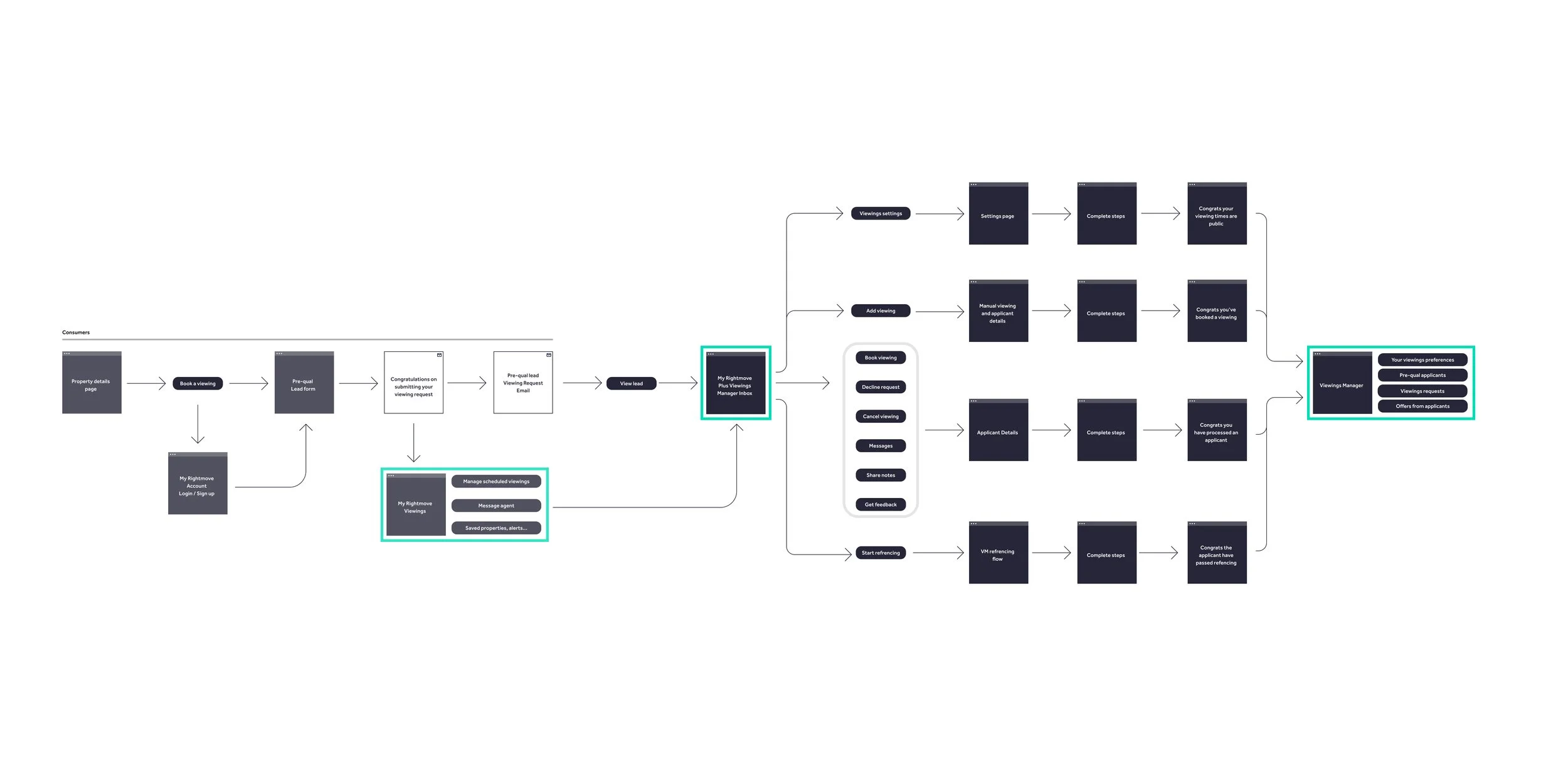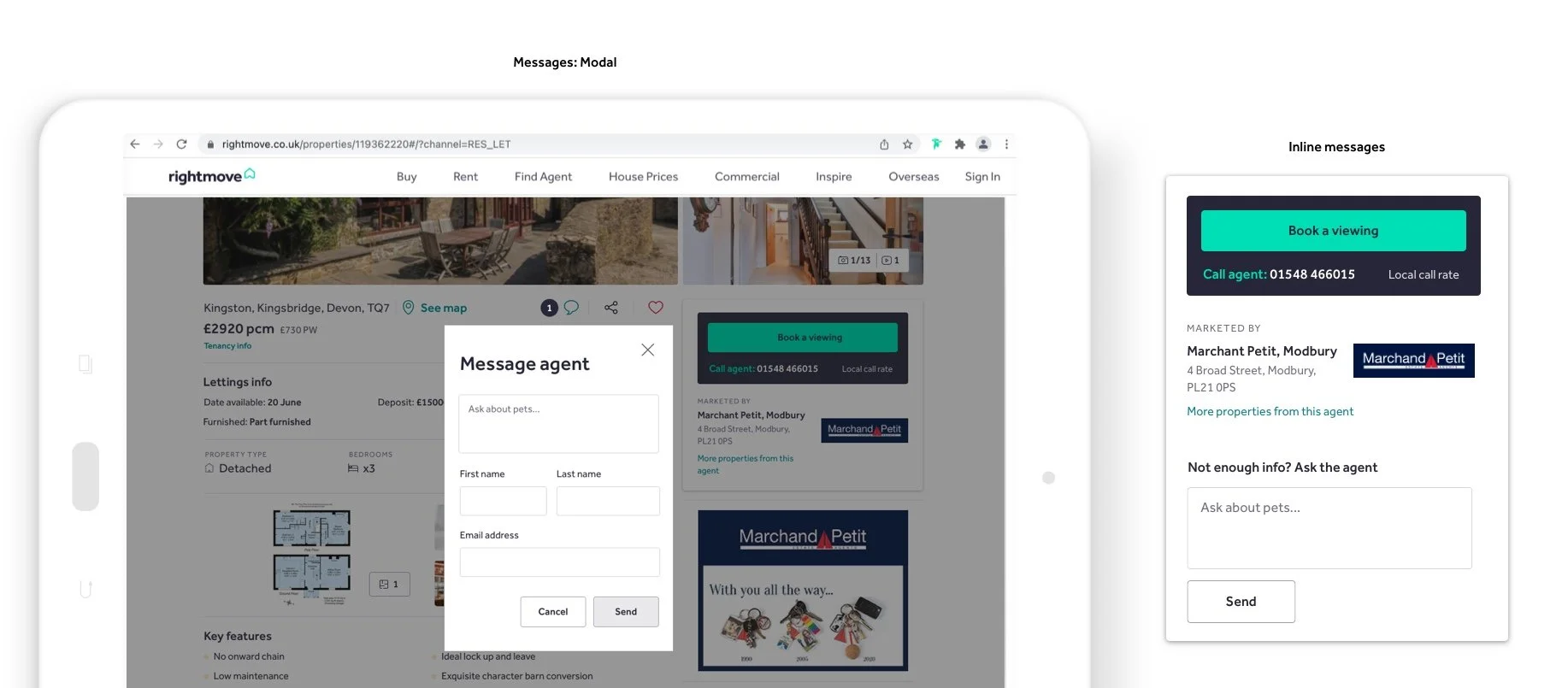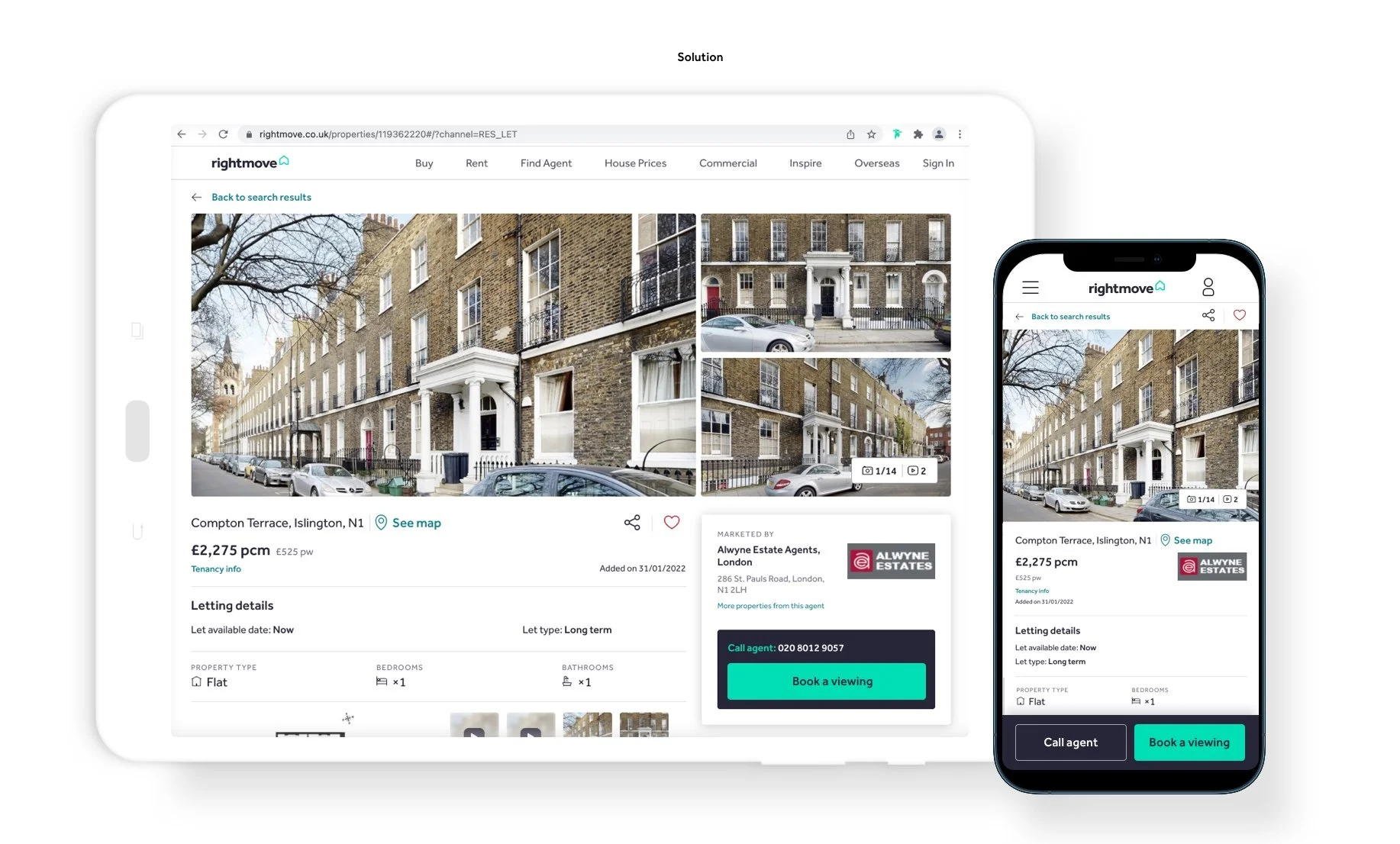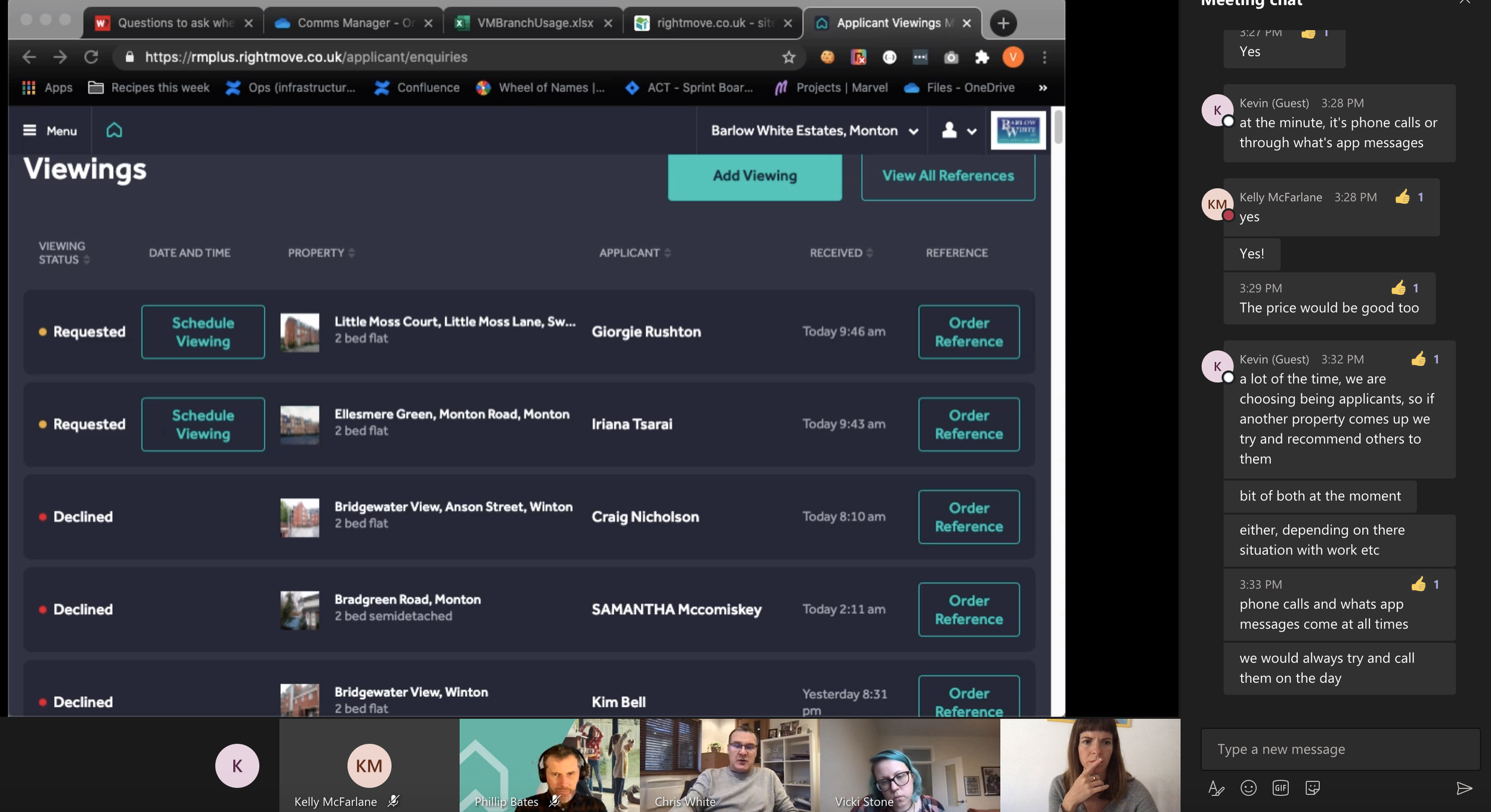I designed a “home manager solution” so renters can set up their new home in minutes.
Everyday, over 5 million consumers use Rightmove to search and enquire about their dream properties. However, once we connect consumers with agents, Rightmove fades into the background at one of life’s most stressful and crucial events: finding the perfect home.
Hence I designed a solution that on one hand connects the dots between finding a home and moving in, increasing revenue and relevance for the business and on the other hand, helps consumers to set up broadband, organise the energy, choose contents insurance and help with other home related services.
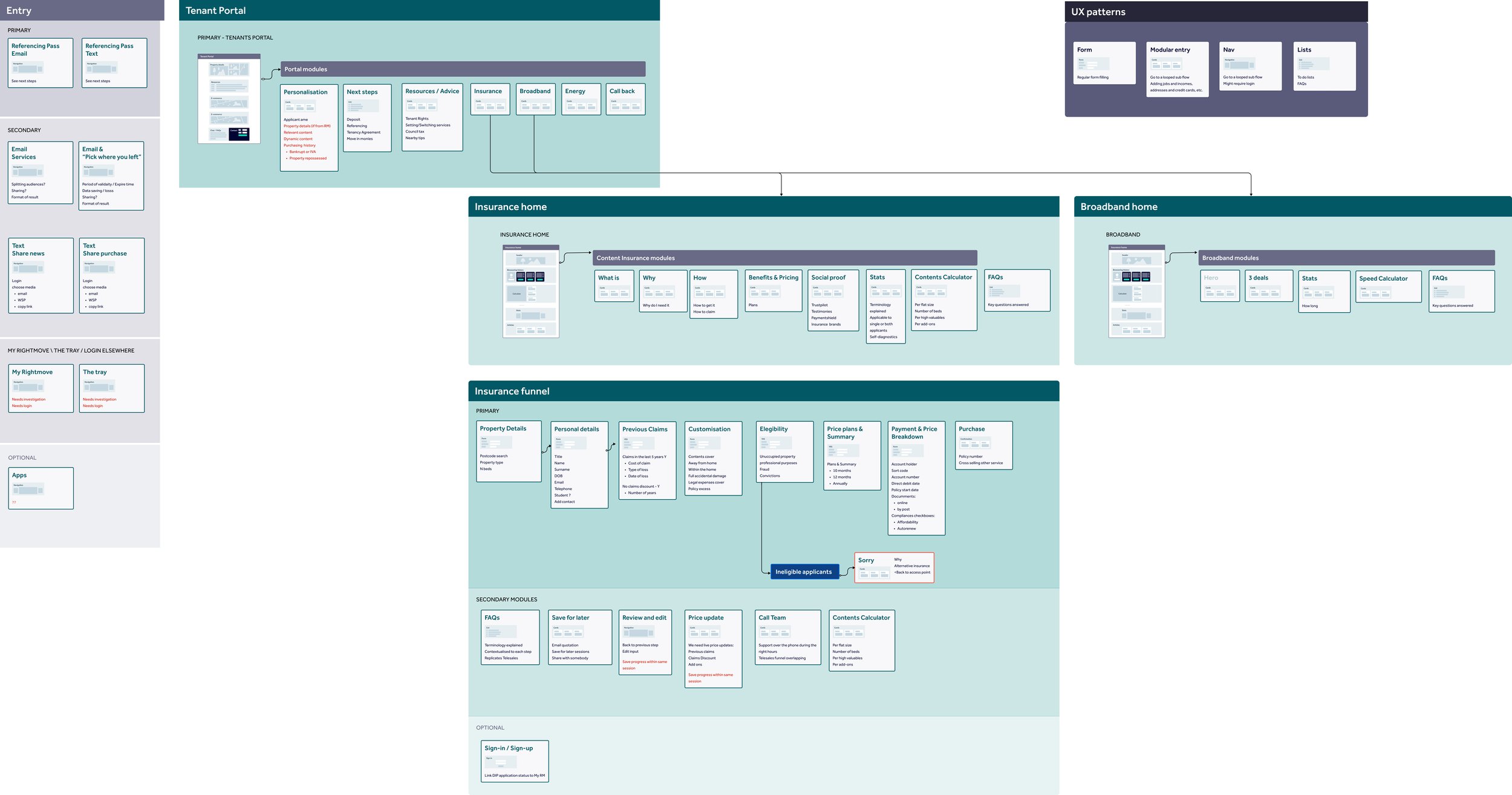
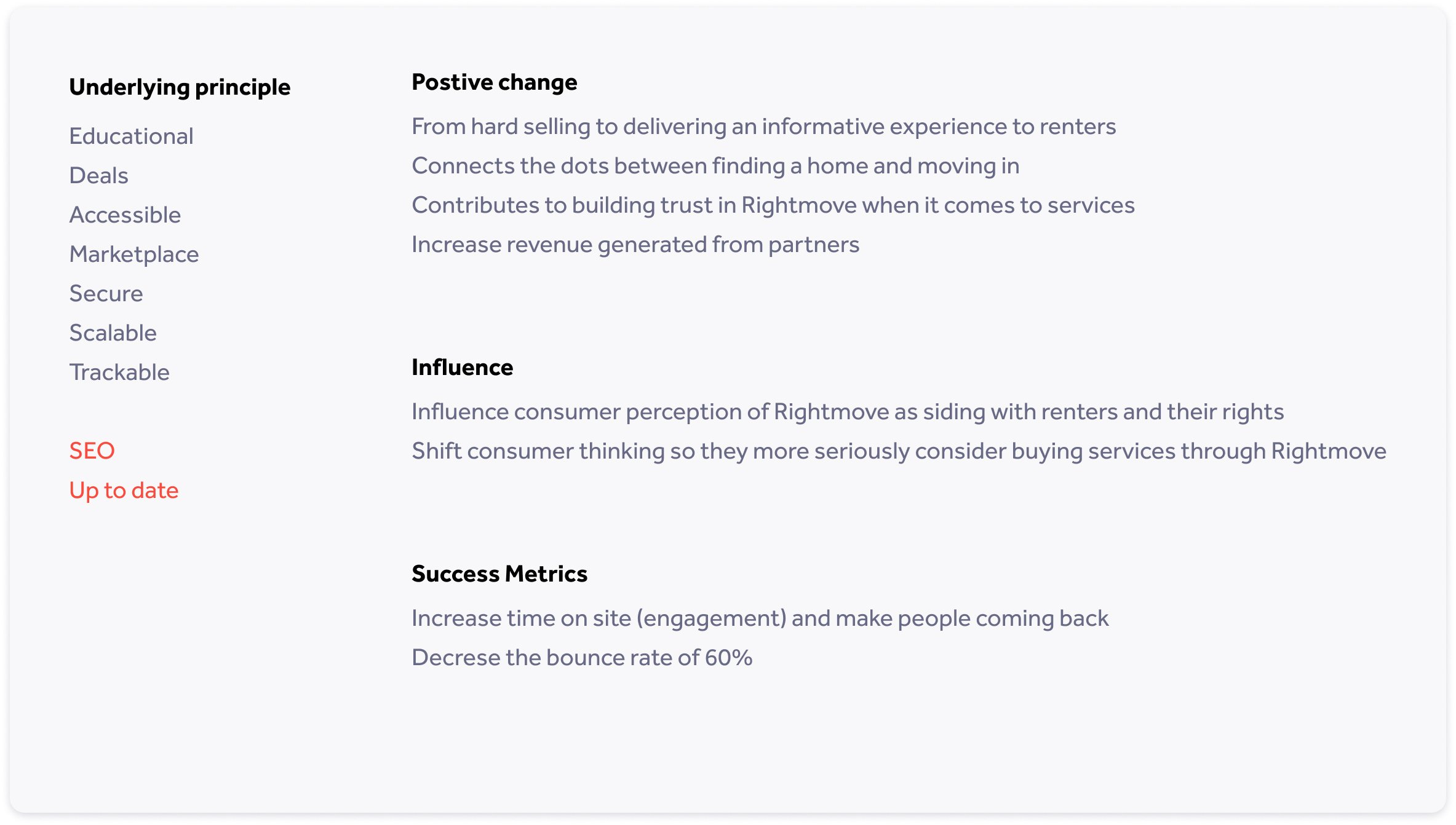
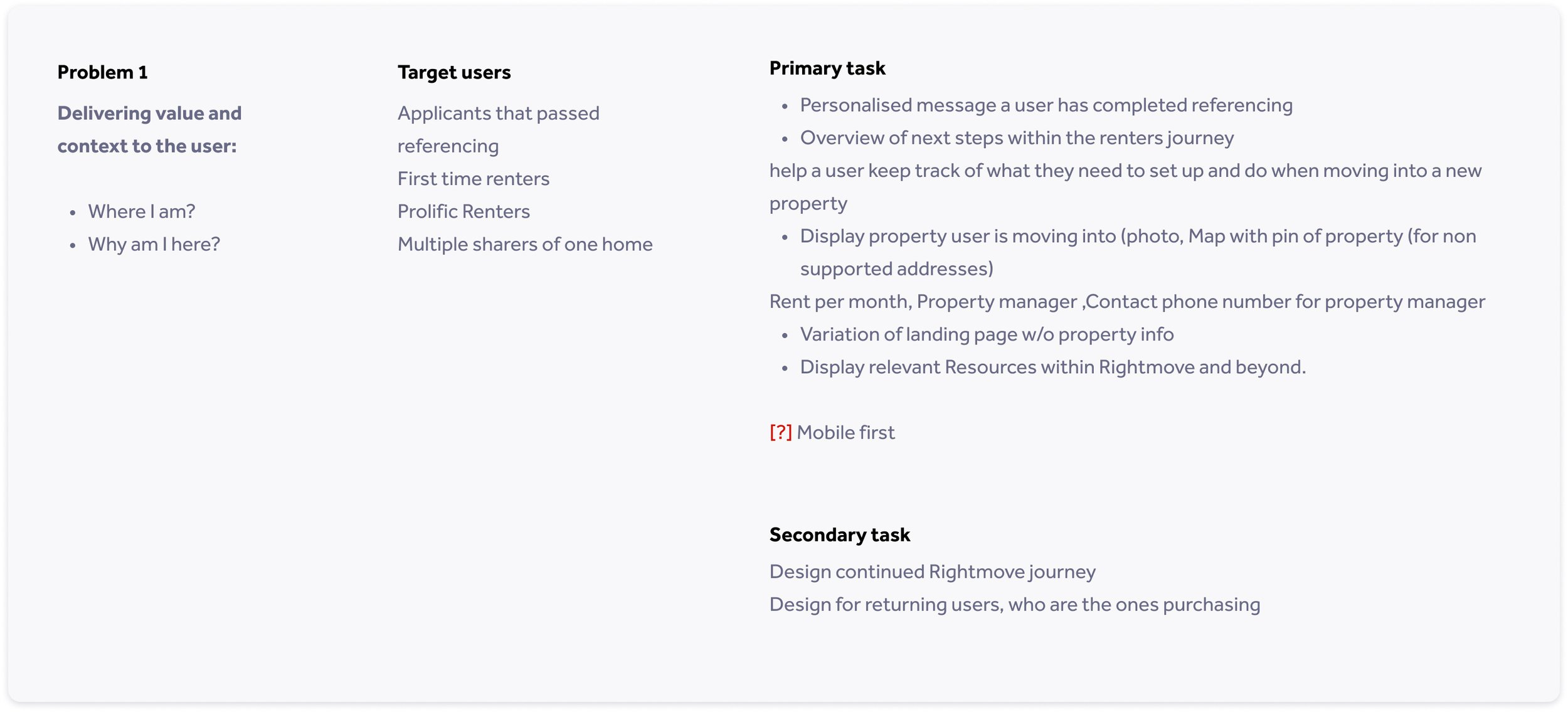
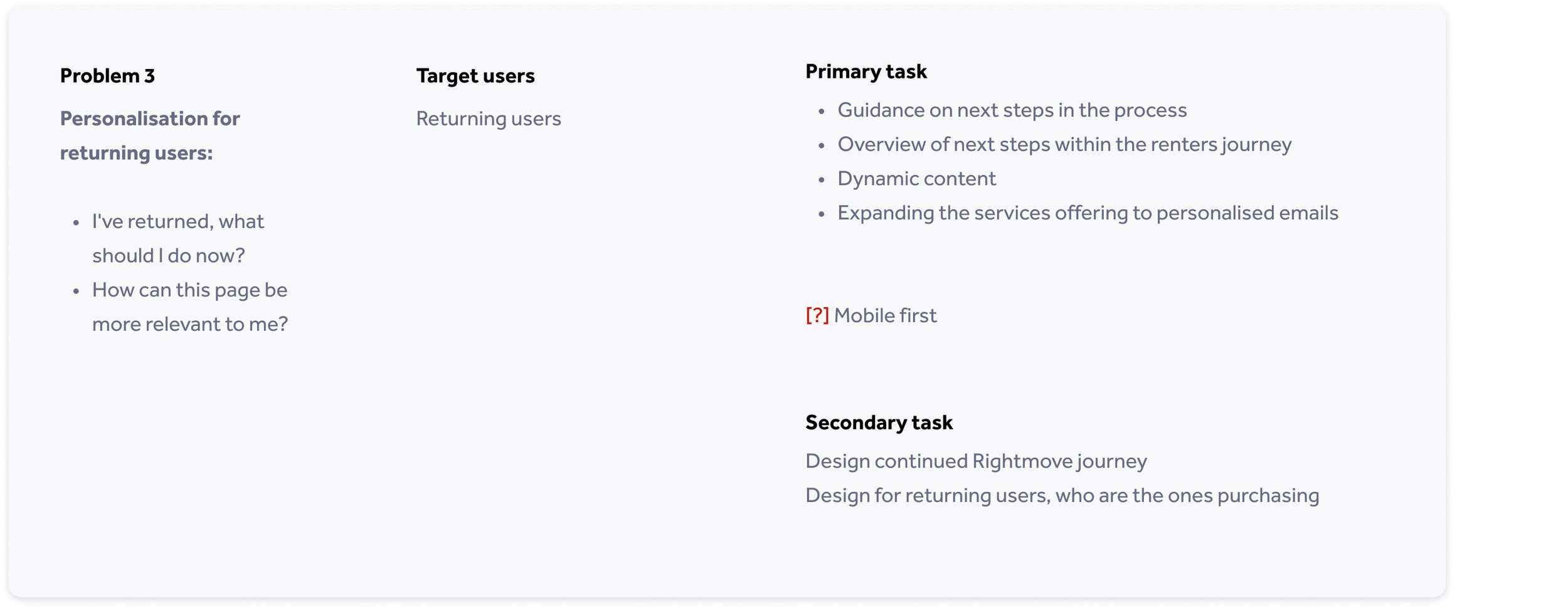
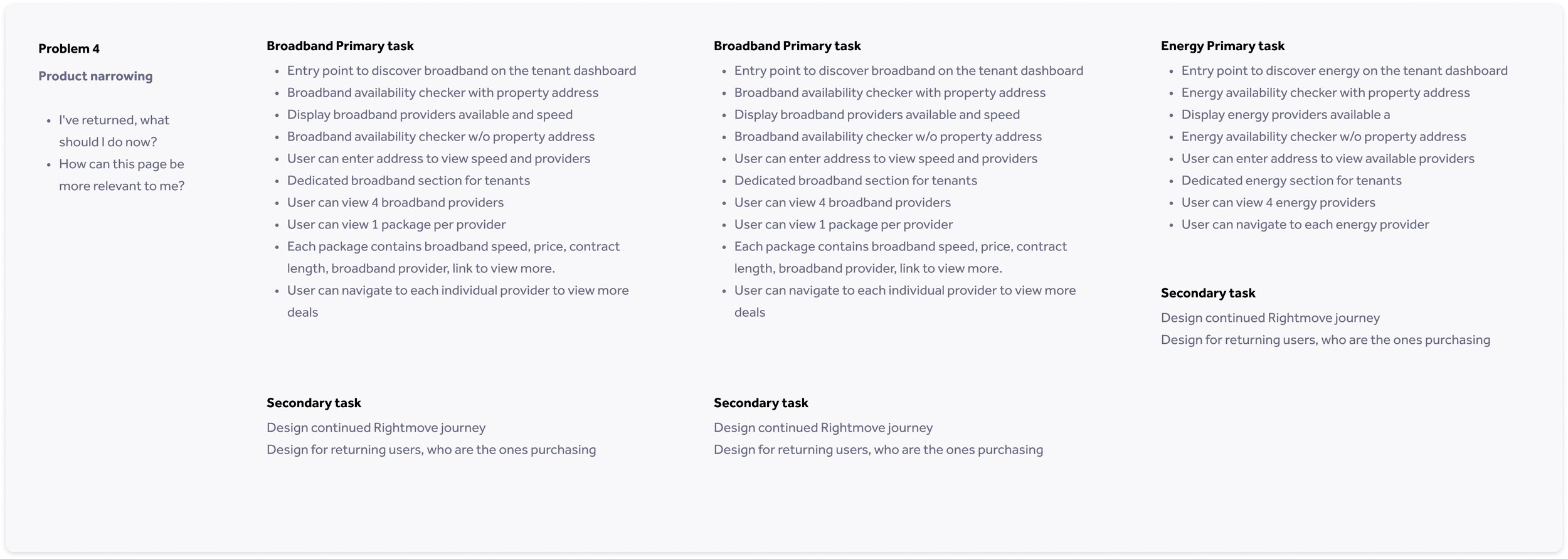
I built this product from scratch (January 2020 - March 2021), from the strategy to launch and through multiple iterations.
As the design expert, I was in constant cross-functional collaboration with
✅ Internal stakeholders: Analytics, UX Researchers, Marketing, Ops, Account Directors, Rent in 5 Team.
✅ My squad “Act”: 1xPO, 1xBA, 6xEngineers, 2xQAs
✅ Users: clients and consumers
We stablished the project goals that helped us to keep important values front and center.
Three pillars
✅ Make agents more efficient.
✅ Increase dependency on Rightmove's tools.
✅ Make communication between consumers and agents simple and convenient.
Principles
✅ Provide just enough value to customers
✅ Deliver as soon as possible.
✅ Comfortable with failing and learning from the experience.
I used this framework to kick-off the conversations and to visualise our problem space
I conducted research in order to create knowledge on the problem space, needs, challenges, target audience and opportunities.
The users
We focused in the lettings space as it was less risky and aligned with the company OKRs. That allowed us to narrow our efforts into a core audience of lettings agents. By travelling to the sites I understood set ups across all agency types: “Single” vs “Multi-branch” vs “Corporate agents”. “Fast” vs “Slow moving property markets”. And “Separate admin staff” vs “All-in-one”.
My toolkit
✅ Field research
✅ Interviews and role-playing
✅ Listening to calls
✅ Leads verbatim analysis
Role-playing during agents interviews allowed us to act out the rental experience
I interviewed 17 users from 10 different agencies.
One of the scripts (for interviewing agents)
I categorised our leads and scanned hundreds of messages. When contacting agents, applicants followed a similar communication pattern which I used later on to drive the information architecture.
I listened to over 30 calls between agents and property seekers requesting a viewing.
I combined all research in insights…
Users’ pains & needs
🆘 Enquire volumes are huge so agents are not responding quickly enough. They also fail to prioritise good leads from bad ones.
🆘 Agents believe that vetting the applicant’s suitability early in the process is one of the most important parts of their job. They often apply a “6th sense” and sometimes the opinion an agent has of a renter could overwrite a bad referencing result.
🆘 Soft vetting and arranging viewings are done through offline interactions (calls). But paradoxically agents need a written confirmation of their offline interactions to keep track of their progress.
🆘 Organising the logistics of viewings is a pain. Even though agents feel like doing the viewings is part of their role, they feel that part takes more time than it should. They also have real security concerns about conducting a viewing with an unknown person.
🆘 From custom made CRMS to written notes there are 250+ tools that agents use to lock in offers.
🆘 Agents find dealing with problematic references/renters as business as usual, the real risk is jeopardising the trust of the landlord in the quality of tenants they bring. The landlord is the real person of interest for them.
… that helped me to decide on what the MVP needed to achieve.
Opportunities for innovation
✅ To create “the tool” so 2,000 letting agencies can manage viewings from enquiry to offer.
✅ To reduce lead response time of agents.
✅ To reduce time from enquiry to offer.
A “thin slice flow”
High level wireframes to visualise the journey of both agents and renters
Strategic design: “Rent in 5”
Although my main goal was to drive growth from core customers (agents), I also contributed to the diversification of Rightmove’s revenue streams by building the needed foundations to expand into the transaction space. This project was called “Rent in 5” and sat at the crossroads between design, business innovation and growth. As the first hired Product Designer and design lead in the Act Team I was a “Rent in 5” contributor from day 1.
Weekly “Rent in 5” collab workshops
Designing the experience was fun… But it was not easy! Here is why:
My next step was to begin the design phase. Below is the flow of design iterations, from low to high fidelity. Frequent calls with agents and field trips helped me to validate the designs. In this phase, I overcame two big challenges:
🆘 Not seeing the full picture
Thinking about the hypothesis in the early research phases, we realised that we needed to include the renters’ POV because they are the one initiating the conversations and are at the end of the phone. To move forward we knew that we needed to speak to them. It was time consuming but essential.
🆘 Lack of design system
Rightmove Plus has a distinctive dark mode, but beyond that there is not a design system per se. So instead of “wasting time” building out buttons and components, I worked backward from there. I focused on building flows and delivering UI designs that became part of Rightmove Plus’ design system in the making.
To reduce time from enquire to offer, I eliminated unnecessary steps in the entry point:
Adding an entry point in the Details Page was a balancing act between business goals and consumers and agents’ needs
My assumption tested successfully: consumers didn’t mind to log in / create an account in order to book a viewing
After a round of agents’ feedback, we de-scoped the messaging ability for the MVP
The change was a success with renters: 84% of applicants use it
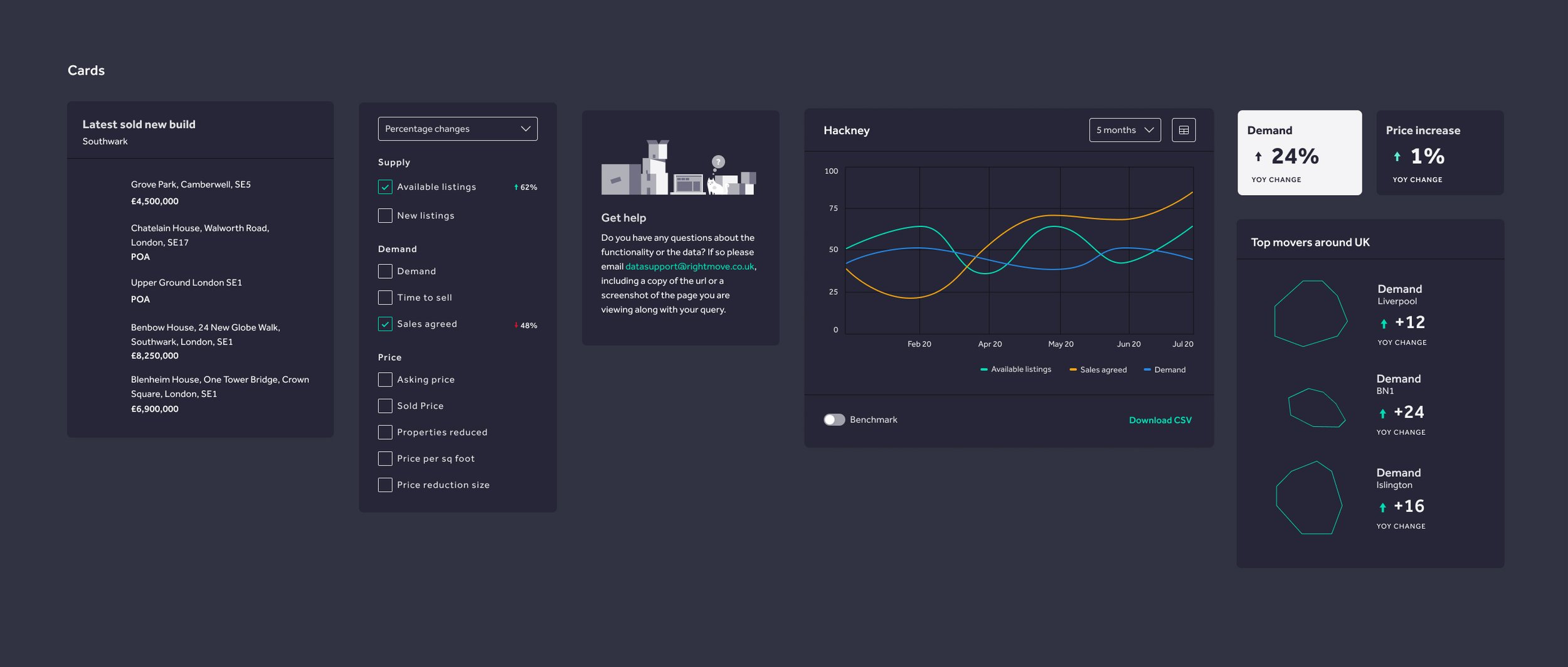


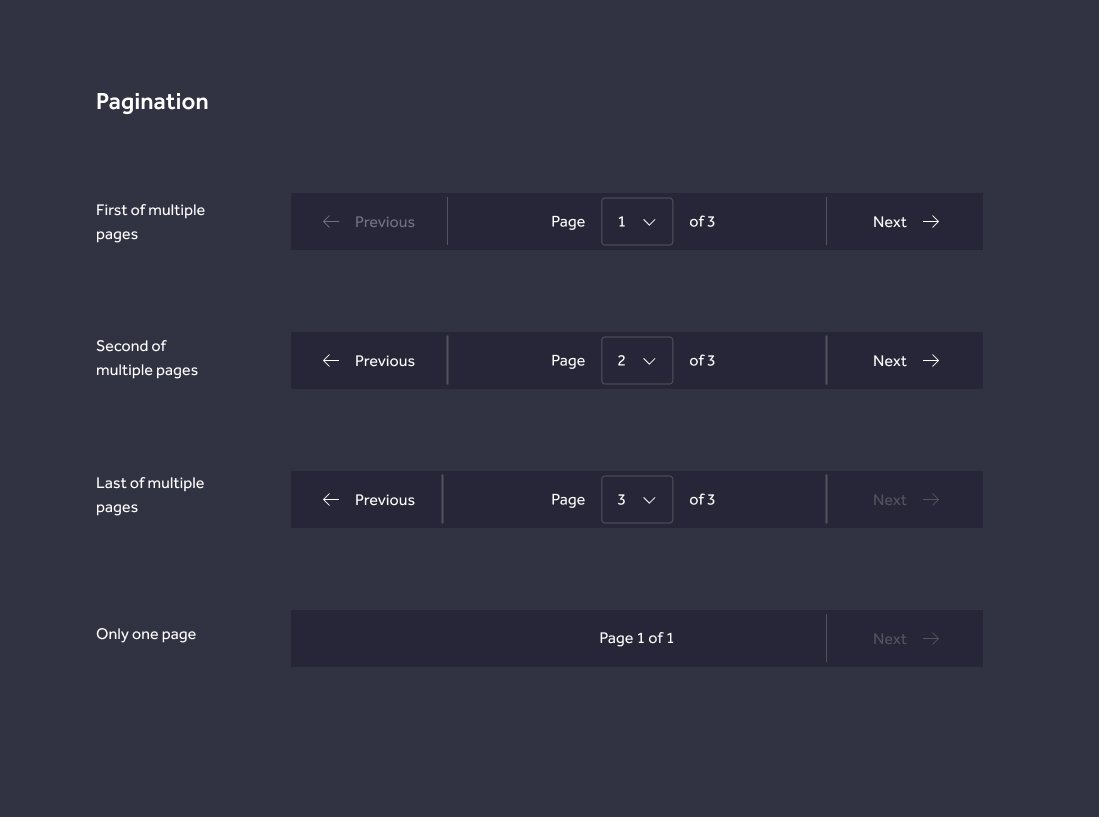
The new “superlead” introduced three key common questions that helped agents to save time
My assumption tested successfully: consumers didn’t mind to log in / create an account in order to book a viewing
After a round of agents’ feedback, we de-scoped the messaging ability for the MVP
The change was a success with renters: 84% of applicants use it



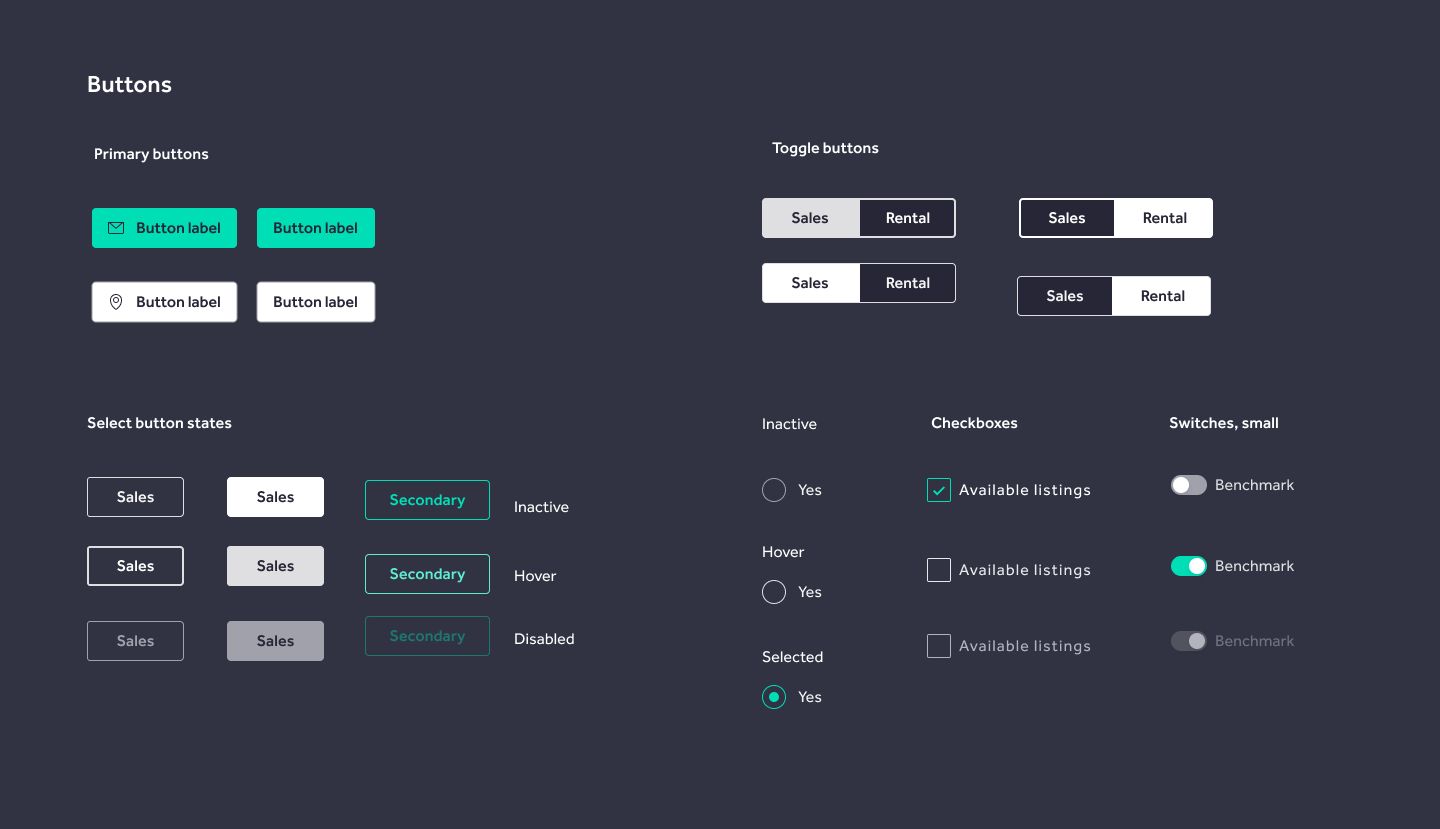
In April 2020 we released an experimental Viewings Manager! But we faced massive adoption challenges…
Our MLP had just enough features to be considered “working”. We made it available to only 17 customers (out of 2,000) in Bournemouth, York and London. And I spent the next six months monitoring and working closely with up to 103 customers to learn how to evolve the product.
In this stage, we faced unexpected challenges:
🆘 Complex systems and fragmentation
Unlike in other industries, in real estate there are hundreds of tools used by agents to lock in offers. From low-fi processes like pen and paper to hi-fi custom made CRMs. This made it hard to prioritise what would deliver the most value for our users.
🆘 Not changing behaviours
Although the product is used and liked, our stats show us low adoption: more than 50% of the agents prefer to arrange a viewing via the phone. We’re embracing this behaviour and also exploring solutions to drive the adoption of this feature from the consumers’ side.
🆘 Business’ centricity and innovation resistance
In retrospect, overcoming this was my biggest achievement. As the design expert trying to balance Rightmove’s centricity against our users’ needs was the biggest and longest standing challenge. A few months into the project I realised that our target audience had their own ways of working. To succeed we needed to respect their existing methods and systems and develop features to complement it rather than impose our own corporate ego. To overcome the business’ resistance, I patiently involved my team in my creative process so they were instrumental in the discoveries rather than simply following decisions.
I spent the next year gathering valuable data, optimising the journey and introducing other core features
However the real game changer is integration. Integration with our clients’ solutions will enable us to future proof our ecosystem, making it easy to scale, adapt and adjust as business requirements change.
Polishing our MLP: research and workshops
Referencing integration research: a core feature to streamline the whole renting process
To prioritise what would drive the most value to our clients I ran workshops with the team
A few iterations and releases later we got to a well-performing baseline
By April 2021 we have achieved over 40% of our 2000 agents target and counting and by November 2021, 1746 clients were using Viewings Manager. We know we have not reach our 100% target but the foundations are in place.
Conclusion
Impact
✅ 1746 clients (out of 2,000 target) adopted Viewings Manager (by Nov’21).
✅ 50% less “no-shows” as it is easier for agents and tenants to reach out to each other and canceling by clicking a button.
✅ 100% customer satisfaction with the leads quality. Plus the product saves agents time questioning and chasing tenants who aren’t then able to proceed.
✅ 84% consumers’ satisfaction with the ability to arrange and manage a viewing without talking to agents over the phone.
✅ 2nd feature driving account creation for Rightmove.
Scope for improvement
This MVP is far from perfect… For Rightmove to influence further the rental process there are several areas that I’d love to improve:
✅ Landlords’ relationships: we need to help agents strengthen their offering to landlords and improve their relationship.
✅ Cross-selling: we need to help agents to offer property seekers better matches. As this increase time-on-site, cross-selling can be beneficial for Rightmove too.
… that helped me to decide on what the MVP needed to achieve.
OPPORTUNITIES FOR INNOVATION
✅ To create “the tool” so 2,000 letting agencies can manage viewings from enquire to offer.
✅ To reduce lead response time of agents.
✅ To reduce time from enquiry to offer
✅ To cut down on repetitive questions that are key to the soft vetting of an applicant
✅ To help agents to prioritise the leads that will grow their business and the landlords.
✅ To cut down on time spent chasing offers and feedback.
✅ To keep a written trail of all their offline interactions with applicants that allows applicant progress tracking and facilitates knowledge sharing with the team.
Clients feedback
“It’s made our business more streamlined and it suits both the tenant and the landlord.”
Jon Myers – Director, Quick & Clarke
“Using Viewings Manager has improved the quality of our leads enormously. We’re wasting less time questioning and chasing tenants who aren’t then able to proceed”
— Quote Source
“Best of all our no-shows have almost halved. The system makes it much more likely for a tenant to cancel an appointment, as they only have to click to cancel when they get sent the reminders by email and text the day before”
— Quote Source
Clients feedback
What our clients are saying
“It’s made our business more streamlined and it suits both the tenant and the landlord.”
Jon Myers – Director, Quick & Clarke
“It’s made our business more streamlined and it suits both the tenant and the landlord.”
Jon Myers – Director, Quick & Clarke
“Best of all our no-shows have almost halved. The system makes it much more likely for a tenant to cancel an appointment, as they only have to click to cancel when they get sent the reminders by email and text the day before”
— Quote Source
